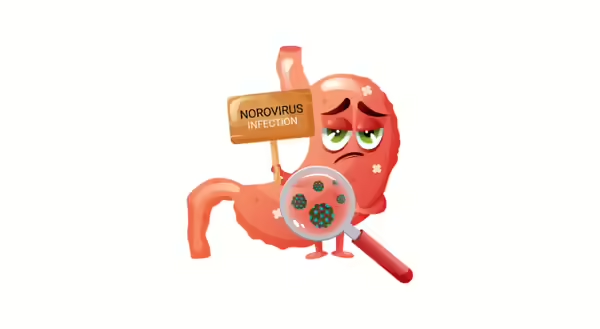
Norovirus is the number one cause of foodborne disease outbreaks in the United States. The number of Norovirus cases reported to the Centers for Disease Control and Prevention (CDC) for the year 2024-2025 has more than doubled compared to previous years. Victims of Norovirus can show signs and symptoms including diarrhea, vomiting, nausea, stomach pain, fever, and headaches. Fresh produce is the most implicated food group in Norovirus outbreaks, followed by shellfish, meat, and poultry. Other sources of Norovirus include contaminated water and contaminated surfaces. Norovirus spreads very quickly from person to person through the fecal oral route, when fecal particles from an infected person are left on surfaces which other susceptible people touch before they eat. Norovirus particles can survive on surfaces for extended periods of time and is not easily destroyed by sanitizer compounds used at regular concentrations.
The measures below can help to minimize the spread of Norovirus.
- Sick people including workers and family members with symptoms such as diarrhea and vomiting should not be preparing food, touching fresh produce or food contact surfaces.
- Wash hands properly with soap and water after using the toilet, before preparing food, before eating and whenever hands become contaminated.
- Cook meat, poultry, and Shellfish to the minimum temperature recommended to destroy foodborne pathogens.
- Regularly clean and sanitize food contact surfaces and other non-food contact surfaces that are touched frequently.
- Take precautions when caring for others who maybe sick with Norovirus.
- Properly clean up stool and vomit following these guidelines.
- Train workers about proper hygiene and sanitation
- Provide workers with hygiene facilities including toilets and hand washing stations and ensure that they are cleaned and restocked regularly with all the supplies needed including, toilet paper, clean water, soap, and single use towels.
Sources
Centers for Disease Control and Prevention (CDC) NoroSTAT Data
Foodborne Illness Outbreaks Reported to National Surveillance, United States, 2009–2018
Infections transmitted via the fecal–oral route: a simple score for a global risk map